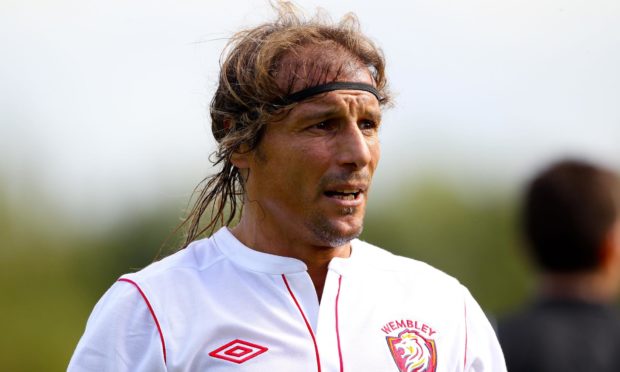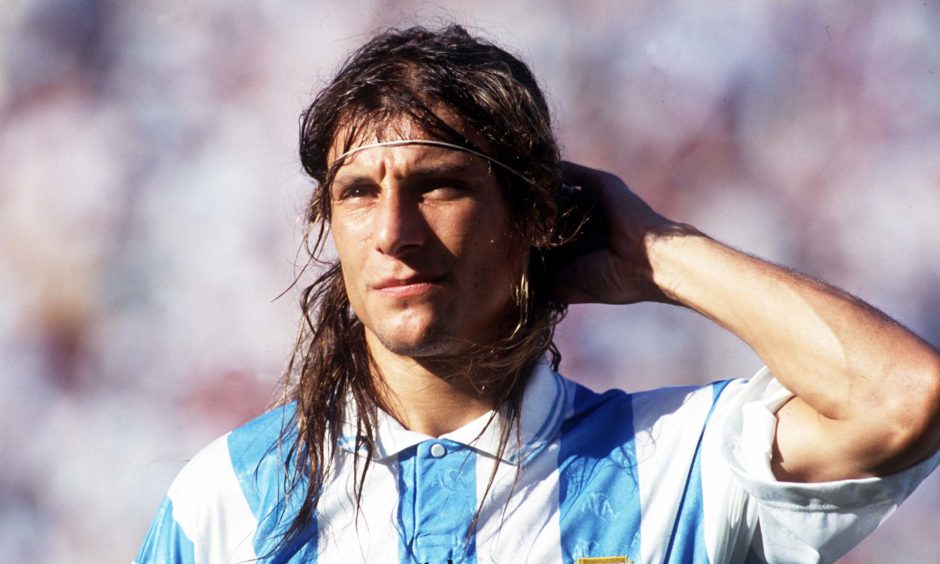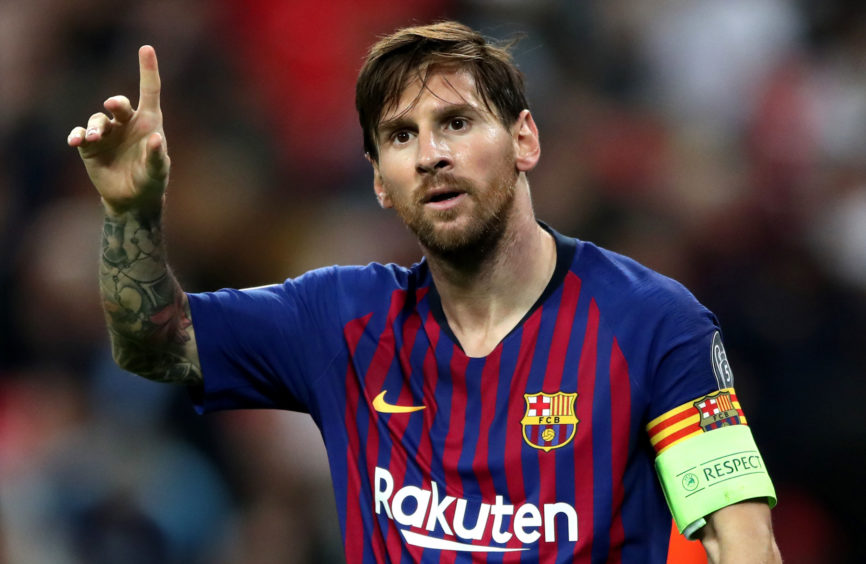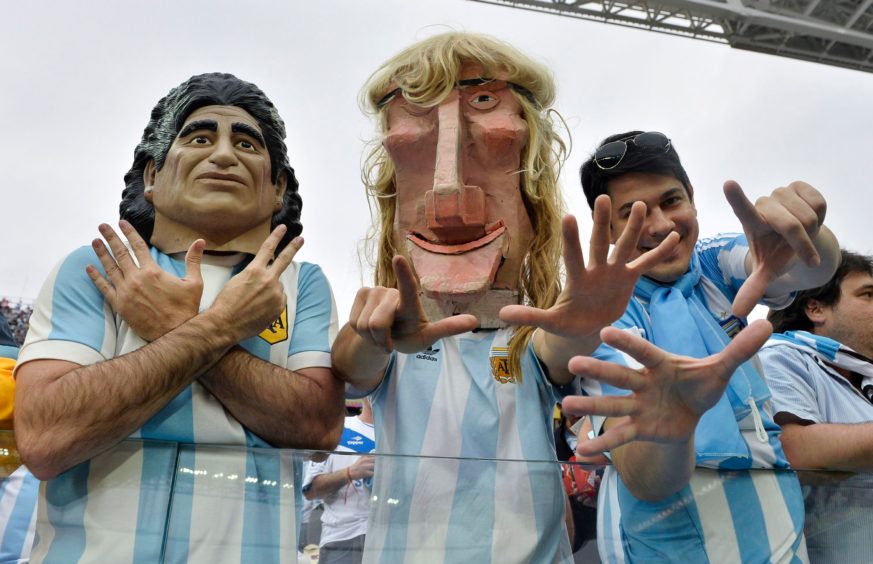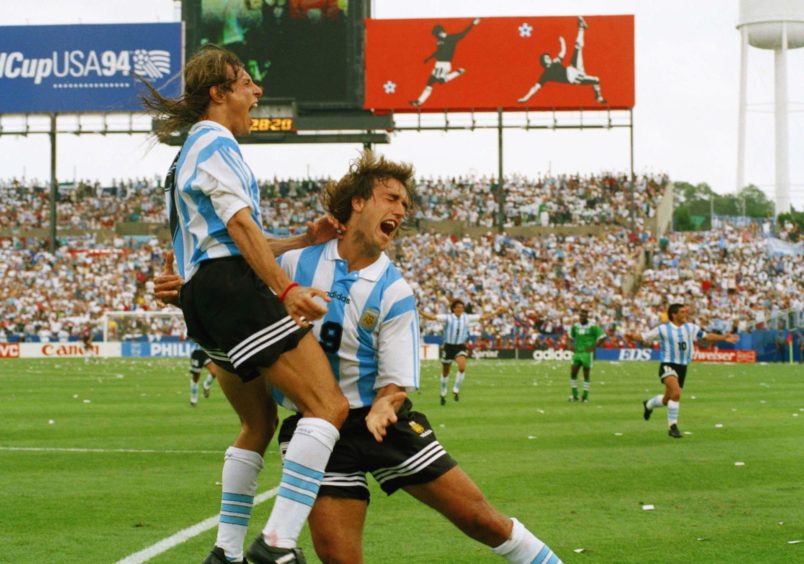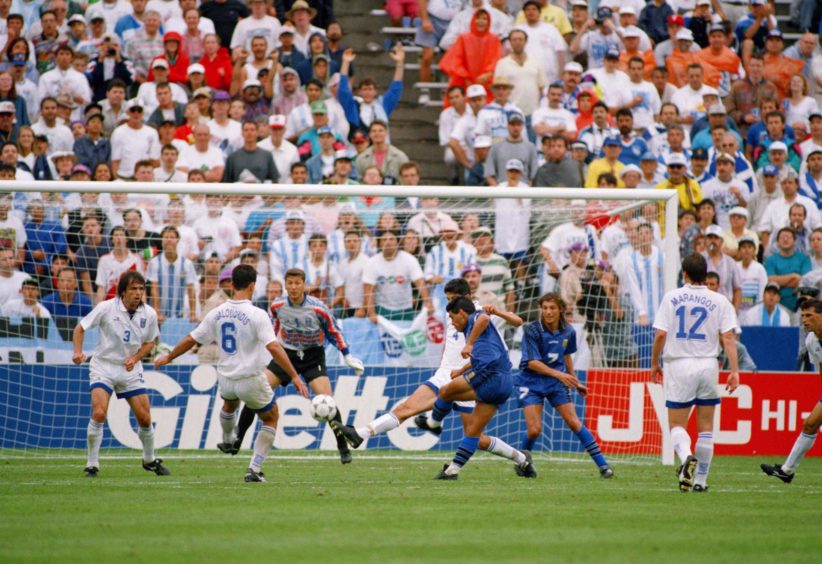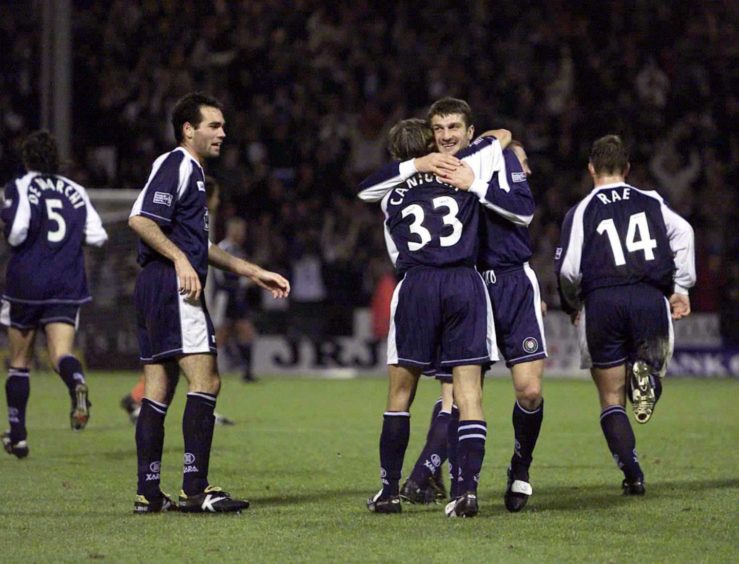Seemingly washed up and past his best at the age of 33, Claudio Caniggia’s career was ultimately revived during his brief spell in Dundee 20 years ago which is the subject of our exciting new documentary.
Caniggia: 20 Years On premieres on Thursday and lifts the lid on the switch that stunned the footballing world, with contributions from former team-mates and boardroom big-hitters involved in the deal.
Caniggia would go on to achieve his dream of making the 2002 World Cup in Japan and Korea although he was shown a red card before playing a single minute.
Redemption
Argentina manager Carlos Bilardo offered him redemption and the chance to play alongside Lionel Messi at the age of 43.
Bilardo gave him an incredible opportunity to return to the game after four-and-a-half years at the World Cup in South Africa in 2010.
Caniggia was retired from football and couldn’t decide what to do and eventually turned down the offer.
“We’ll never know now, but to play 30 minutes would have been perfect,” he said.
“I was in good shape and I hadn’t lost my pace.
“It would’ve been unbelievable to play at another World Cup.”
Caniggia was still fast and Bilardo knew it.
Little wonder given Caniggia was once capable of running 100 metres in less than 11 seconds.
Before taking up football, the young Caniggia had competed in athletics at provincial level despite a strange running style.
Caniggia was developed in the famous River Plate youth academy and burst into the first team as a fresh-faced 18-year-old in 1985.
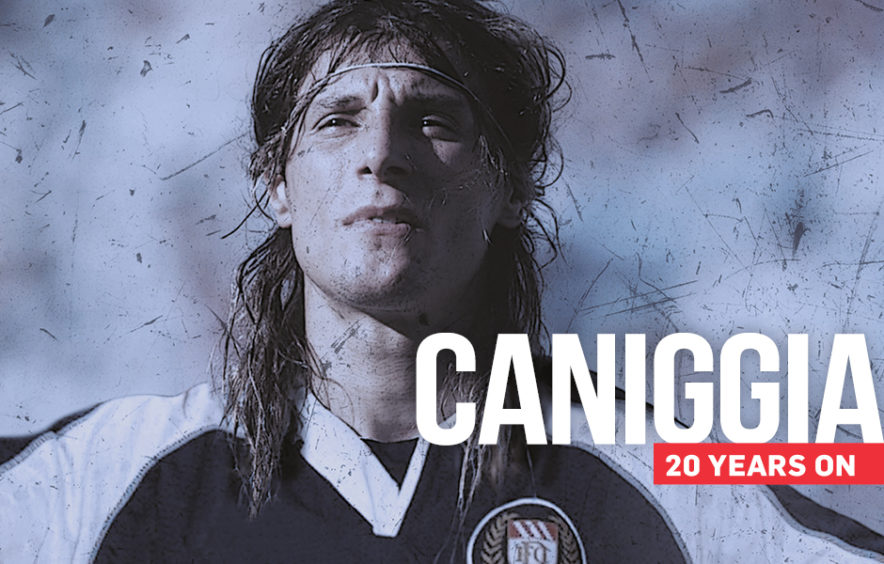
River Plate would make history the following year by winning the league, the Copa Libertadores, the Copa Interamericana and the club’s first Intercontinental Cup title.
He was first capped in the Argentina squad for the Olympic Games qualifiers in early 1987, before becoming an established part of the senior national team later that same year.
Caniggia made 53 league appearances and scored eight goals for River Plate which prompted a move to Italy where he joined Hellas Verona in 1988.
Diego Maradona
Playing as a winger at times, he managed 21 appearances and three goals in the number 7 shirt at a time when his international strike partner Diego Maradona had almost single-handedly turned Napoli into Italy’s outstanding side.
After just one season, Caniggia moved to Atalanta where he played 85 league games and scored 26 goals, but it was his performances in the national side that would make him a household name.
Caniggia started on the bench as Argentina opened their 1990 World Cup campaign against Cameroon in Italy.
Dundee had ironically been relegated from the Premier League just weeks before Caniggia lined up against Cameroon at the San Siro in what would become known as the ‘Miracle of Milan’.
They were fully expected to thrash a Cameroon team which were 500/1 outsiders and largely made up of journeymen players from the French lower divisions.
Cameroon went a man down when André Kana-Biyik was sent off for a late challenge on Caniggia on 61 minutes.
Just six minutes later Cameroon took the lead when his brother François Omam-Biyik rose to meet a deflected ball and nodded a weak header past Argentine goalkeeper Nery Pumpido.
With just two minutes to go, Caniggia picked up the ball inside his own half and drove up the right wing towards goal at blistering pace and evaded two tackles from green shirts before Benjamin Massing flew in waist-high and sent him into orbit along with Massing’s boot with the greatest foul in World Cup history.
When the international news agency Reuters reported Massing’s tragic death aged just 55 in 2017 the headline stated: “Ex-Cameroon defender who committed World Cup’s worst tackle dies”.
The African team held on for a shock 1-0 win but Caniggia never looked back and his goals took Argentina all the way to the World Cup Final.
Caniggia received a yellow card in the semi-final win over Italy in Naples and was forced to sit out defeat in a dismal and ill-tempered final against West Germany.
The following year Caniggia scored two goals as Argentina won the Copa America, where he formed a new strike partnership with Gabriel Batistuta.
Two years later Caniggia joined Roma in Italy’s Serie A for £6m and he also helped Argentina to the 1992 Confederations Cup when he scored in the final against Saudi Arabia in a 3-1 win.
In February 1993, he scored in the final of the Artemio Franchi Trophy against European champions Denmark and Argentina was declared intercontinental champions following a penalty shoot-out win.
High life
But whilst things on the pitch were going well, Caniggia was living the high life away from the training pitch.
His life was turned upside down when he was hit with a 13-month ban for taking cocaine following a random dope test after Roma’s 1-1 draw with Napoli.
Caniggia left Roma after just 15 league games and four goals and his ban expired just before the 1994 World Cup in the USA.
Caniggia returned to the Argentina squad as if he’d never been away and scored two goals in the first round match against Nigeria.
Argentina were again among the favourites to win the tournament in the USA but it was another doping incident which turned everything upside down and also signalled the end of his great friend and team-mate Maradona’s World Cup career.
Caniggia’s time was also up with the national team and he was frozen out for a number of years after sticking to his guns and refusing to cut his famous blonde locks despite the strict rules of national coach Daniel Passarella.
After the 1994 World Cup Caniggia spent a season with Benfica in Portugal on a year-long loan and scored eight goals in 23 league games before he returned to Argentina to sign for Boca Juniors.
Caniggia was again reunited with Maradona and he scored 32 goals in 74 league games although there was tragedy amongst the triumph when his mother took her own life in September 1996 which prompted Caniggia to shun the game for a year.
He joined Atalanta in 1999 who by now were in Serie B and left almost as quickly following 17 league games after a dispute with coach Giovanni Vavassori despite helping the club gain promotion back to the top flight.
Caniggia was 33 and hadn’t played football for months when he signed for Dundee in October 2000 and he left his mark during his brief stay on Tayside with a total of eight goals in 25 league and cup games before he signed for Rangers in the summer.
He scored 21 goals in 78 games at Ibrox including the opener in the League Cup final win against Celtic in 2003 and left to join Qatar SC where he won the Prince’s Cup before retiring after one last pay day.
He received offers to play in Japan and the USA during his years in professional retirement and spoke about wanting to make a comeback in Australia but nothing materialised.
FA Cup star
Caniggia did return to competitive action in 2012 at the age of 45.
He lined up alongside several other former internationals, such as Ray Parlour and Graeme Le Saux for FC Wembley in the FA Cup which was a stunt that had been dreamed up by Budweiser who were sponsors of the competition.
Caniggia scored on his FA Cup debut.
The match was just 13 minutes old when Caniggia ran on to a perfect through ball and coolly slotted it beyond the goalkeeper to evoke memories of his Dundee debut against Aberdeen at Pittodrie in October 2000.
The non-league side beat Langford 3-2 to set up a clash with Uxbridge in the preliminary round.
Wembley’s FA Cup dreams were shattered after they were mercilessly thumped 5-0 in what was Caniggia’s final competitive appearance.
Caniggia: 20 Years On is available on The Courier from tomorrow, October 8.
